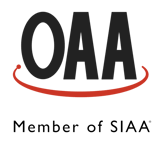Reflective Leaders: How Learning from Wins and Losses Can Make You a Better Leader
3 min read
Topic: Blog leadership Business
Winston Churchill once said, “Success if not final, failure is not fatal; it is the courage to continuethat counts.” It is through wins and losses that leaders grow and businesses prosper. Businessleaders who harness the power of effective reflection recognize that valuable learnings come from the failures as well as the wins and tap into those experiences to hone future decision-making.
In the aftermath of a failure, it may be uncomfortable and even unpleasant to examine what went wrong, but through reflection, leaders can start to see past mistakes as future opportunities. Maybe the failed endeavor didn’t have well-defined objectives or align with the company’s vision. Reflection can help identify internal and external challenges and help leaders gain better insights into how they can solve for them.
Reflection can also provide deeper insight into what may have made an effort successful. Was there a particular employee who stole the show? Was there a new planning process employed that positively impacted delivery? Considering the wins can help leaders recognize positive additions to an effort that helped to push them over the finish line. At the same time, leaders can reflect on identifying weak points to see where processes can be streamlined and improved. There may have been areas where they felt strain. By breaking down what did and did not work, leaders can discover important takeaways for future projects and gain a better understanding ofstrategic priorities and opportunities for personal and organization-wide growth moving forward.
Consider some of the following ways to effectively use reflection in business:
• Open conversations: To encourage critical and close analysis of the team’s missteps and winning moves, leaders can encourage an open conversation among team members. Pull together a list of questions breaking down the team’s process and potential solutions for challenges. Over the course of the conversation, leaders can practice active listening and help identify opportunities for improvement on future initiatives. This not only makes team members feel heard but can also provide leaders with a way to strengthen relationships with employees, paving the way for improved team performance and trust.
• Writing it out: One way business leaders can self-reflect is by taking pen to paper. Find a quiet space to consider the achievements, obstacles, changes made and lessons learned. The act of writing can force leaders to slow down and think more critically about the factors guiding their decision making. By building this time for reflective thinking, leaders can train themselves to think more critically and carefully about strategic decisions, refine ideas and pave the way for further professional growth.
• Peer feedback: In addition to reflecting on personal performance, leaders can ask team members to conduct reflections on their own work and the work of other team members. In combination with an internal reflection, this outside perspective can be helpful in identifying areas for personal and operational growth across the business. Feedback on a leader’s performance can also inform their leadership style moving forward by gaining a better understanding of a team’s workflow, communication styles or management preferences.
The final stage in any reflective practice is to synthesize your thoughts about the experience, identify the most important insights and translate those insights into action. Using these forms of reflection, business leaders can apply changes and establish specific, measurable goals.
Reflection is one skill in an arsenal of tools for business leaders to steer themselves and their teams towards success. By collecting reflective thoughts and transferring them into actionable strategies, business leaders can set themselves and their teams up for continued success in the future.
Tony Caldwell
Tony Caldwell is a modern “renaissance man,” who is not only immensely successful in the field of insurance, but is also a writer, children’s advocate, mentor and even a licensed pilot.
Always keen on helping others make their dreams come true, Tony and his team have helped independent agents grow into more than 250 independent agencies. This has made OAA the number one ranked Strategic Master Agency of SIAA for the last 5 years, and one of Oklahoma's 25 Best Companies to Work for.
Tony loves to share his knowledge, insight and wisdom through his bestselling books as well as in free mediums including podcasts and blogs.
Tony and his family are members of Crossings Community Church, and he is very active in community initiatives: he’s chairman of It’s My Community Initiative, Inc., a nonprofit working with disadvantaged people in Oklahoma City; and chairman of the Oklahoma Board of Juvenile Affairs., and he has served through many other organizations including the Salvation Army, Last Frontier Council of the Boy Scouts of America, and the Rotary Club.
In his spare time, Tony enjoys time with his family. He’s also an active outdoorsman and instrument-rated commercial pilot.

